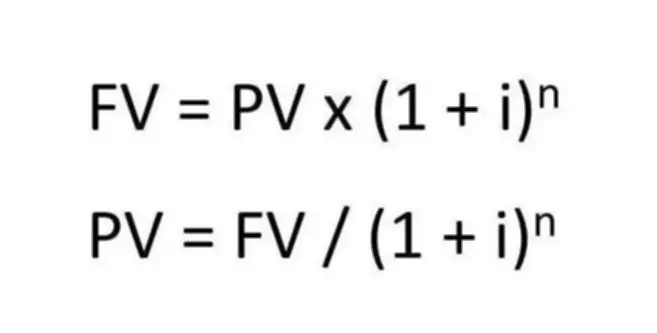Content
- Is there any other context you can provide?
- Are retained earnings a type of equity?
- Create a free account to unlock this Template
- How To Calculate Owner’s Equity or Retained Earnings
- How to Calculate Retained Earnings?
- What is your current financial priority?
- Subscribe to the Sage Advice Small Business Newsletter

Over the same duration, its stock price rose by $84 ($112 – $28) per share. For an analyst, the absolute figure of retained earnings during a particular quarter or year may not provide any meaningful insight. Observing it over a period of time (for example, over five years) only indicates the trend of how much money a company is adding to retained earnings. Retained earnings show a credit balance and are recorded on the balance sheet of the company. A balance sheet example showing retained earnings is provided below. However, retained earnings is not a pool of money that’s sitting in an account.
- The cost approach provides an accurate assessment of the value of the net worth based on the profitability of the business.
- This bookkeeping concept helps accountants post accurate journal entries, so keep it in mind as you learn how to calculate retained earnings.
- It would also be helpful to read the Notes to Consolidated Financial Statements included in the 10-Ks supplied to the U.S.
- This article outlines everything you need to know, but feel free to jump straight to your topic of focus below.
- The statement of retained earnings is a financial statement entirely devoted to calculating your retained earnings.
Any profits that are not distributed at the end of the LLC’s tax year are considered retained earnings. Undistributed profit is shown in the books as retained earnings. Alternatively, companies take the net income for the period to the retained earnings account first. Subsequently, they subtract any declared dividends from that balance. Retained earnings are usually considered a type of equity as seen by their inclusion in the shareholder’s equity section of the balance sheet.
Is there any other context you can provide?
This is a liability (shareholders’ fund) of the company to pay the earnings back to the shareholders. Thus, the retained earnings are credited to Retained Earnings Account. When your company makes a profit, you can issue a dividend to shareholders or keep the money. You can use retained earnings to fund working capital, to pay off debt or to buy assets such as equipment or real estate. Retained earnings are net income (profits) that a company saves for future use or reinvests back into company operations. You should report retained earnings as part of shareholders’ equity on the balance sheet.
- If you have a net loss and low or negative beginning retained earnings, you can have negative retained earnings.
- A balance sheet contains a wealth of financial information for a small business owner.
- More detailed definitions can be found in accounting textbooks or from an accounting professional.
- The partners each contribute specific amounts to the business at the beginning or when they join.
- Typically, this category contains cash dividends to owners of common stock, but would also include any stock dividends.
To calculate owner’s equity, subtract the company’s liabilities from its assets. This gives you the total value of the company that is shared by all owners. If the ratio is 1 or higher, the company has enough cash and liquid assets to cover its short-term debt obligations. Similar to the Income Statement, Acme manufacturing’s Balance sheet (seen below) can be assessed through a variety of ratios and functions. While credit decisions should not be based on the analysis of a balance sheet or income statement alone, it does offer insight to show general business health. The balance sheet highlights the financial position of a company at a particular point in time (generally the last day of its fiscal year).
Are retained earnings a type of equity?
Keir is an industry expert in the small business and accountant fields. With over two decades of experience as a journalist and small business owner, he cares passionately about the issues facing businesses worldwide. The first part of the asset definition does not recognize retained earnings. Secondly, retained earnings are economic benefits that have already occurred. Revenue is the total amount of income generated by the sale of goods or services related to the company’s primary operations. Revenue is the income a company generates before any expenses are taken out.
- One big difference is that rather than simply selling stock or services,…
- Retained earnings are reported on the balance sheet, in the section on owner’s equity.
- An encumbrance is a legal restriction on an asset, such as a piece of property in real estate, that may affect the transfer of the asset or restrict usage.
- The larger the ratio, the larger the amount of assets needed to be liquidated.
- Retained earnings are net income (profits) that a company saves for future use or reinvests back into company operations.
- The company posts a $10,000 debit to cash (an asset account) and a $10,000 credit to bonds payable (a liability account).
Any such stock buy-backs might show up as a negative number on the balance sheet in an account called treasury stock. Overall, retained earnings include all profits or losses a company has made since the beginning. However, it subtracts any dividends paid to shareholders first.
Create a free account to unlock this Template
Company revenue is a line item at the top of the income statement. You must adjust your retained earnings account whenever you create a journal entry that raises or lowers a revenue or expense account. The reserve account is drawn from retained earnings, but the key difference is that reserves have a defined purpose, like paying down an anticipated future debt.
At Finance Strategists, we partner with financial experts to ensure the accuracy of our financial content.
How To Calculate Owner’s Equity or Retained Earnings
Finally, there may be some accumulated gains or losses from parts of the business that don’t show up in the retained earnings account. If you had all of this other information, you could calculate a pretty good estimate of the retained retained earnings on balance sheet earnings balance. Retained earnings are listed on the balance sheet under shareholder equity, making it a credit account. The concept of debits and credits is different in accounting than the way those words get used in everyday life.

Next, any adjustments to correct the prior balance must be made. These adjustments could correct errors or rectify incorrect estimates that were used in the preceding accounting period. While retained earnings are good for growing and protecting a business, too many retained earnings may reflect stagnation. It can indicate to investors that a business has run out of ideas to invest and grow. The surplus of cash may also make the business become inefficient. These articles and related content is the property of The Sage Group plc or its contractors or its licensors (“Sage”).
How to Calculate Retained Earnings?
Knowing and understanding the retained earnings figure can help with business growth. And if they aren’t taking care of basic accounting matters, then it could be viewed as a sign of a poorly-run operation. A Limited Liability Company, referred to as an LLC, is a type of corporate structure where individual shareholders are not personally liable for the company’s debts. Like in a general partnership, profits of an LLC are generally distributed to the shareholders.